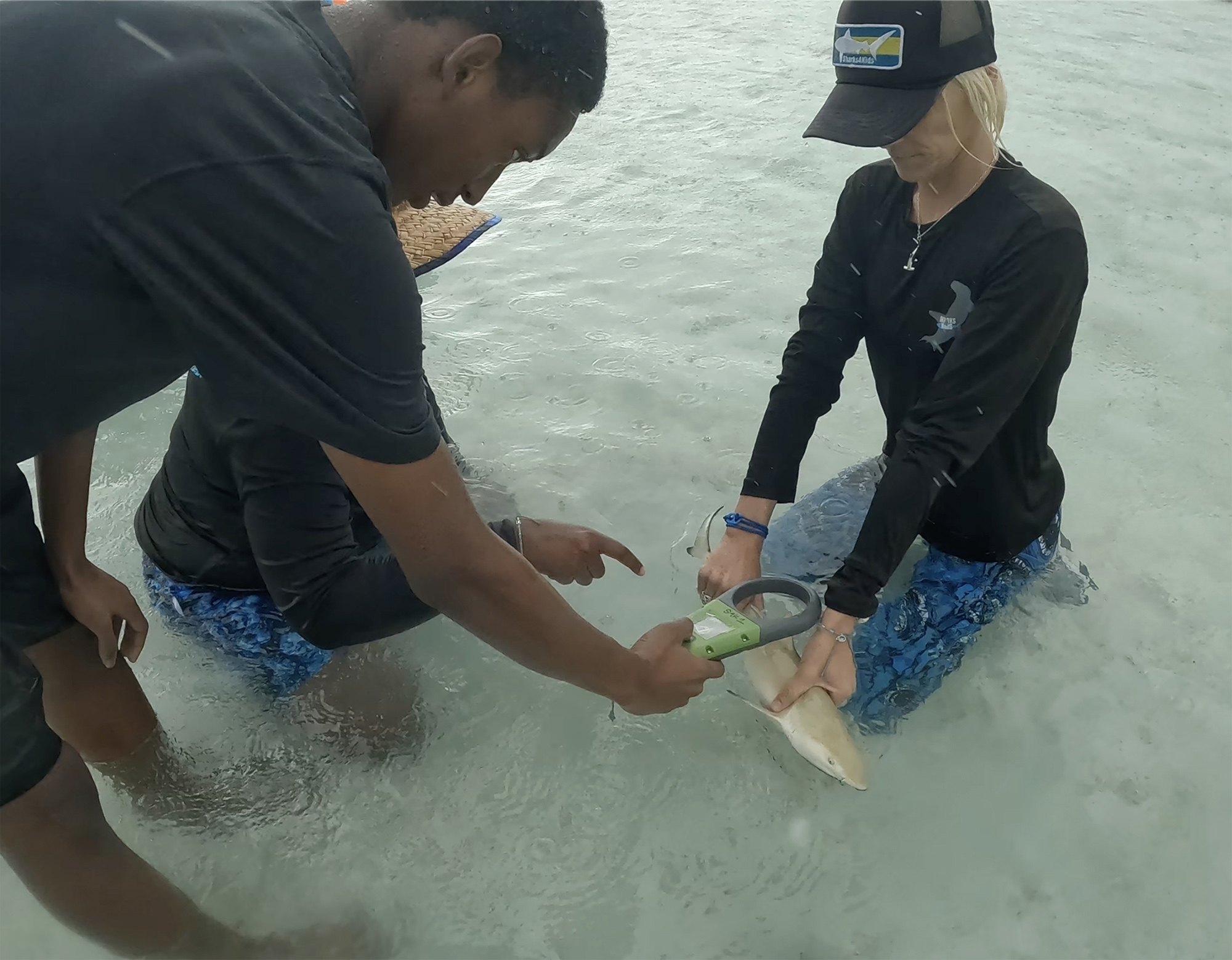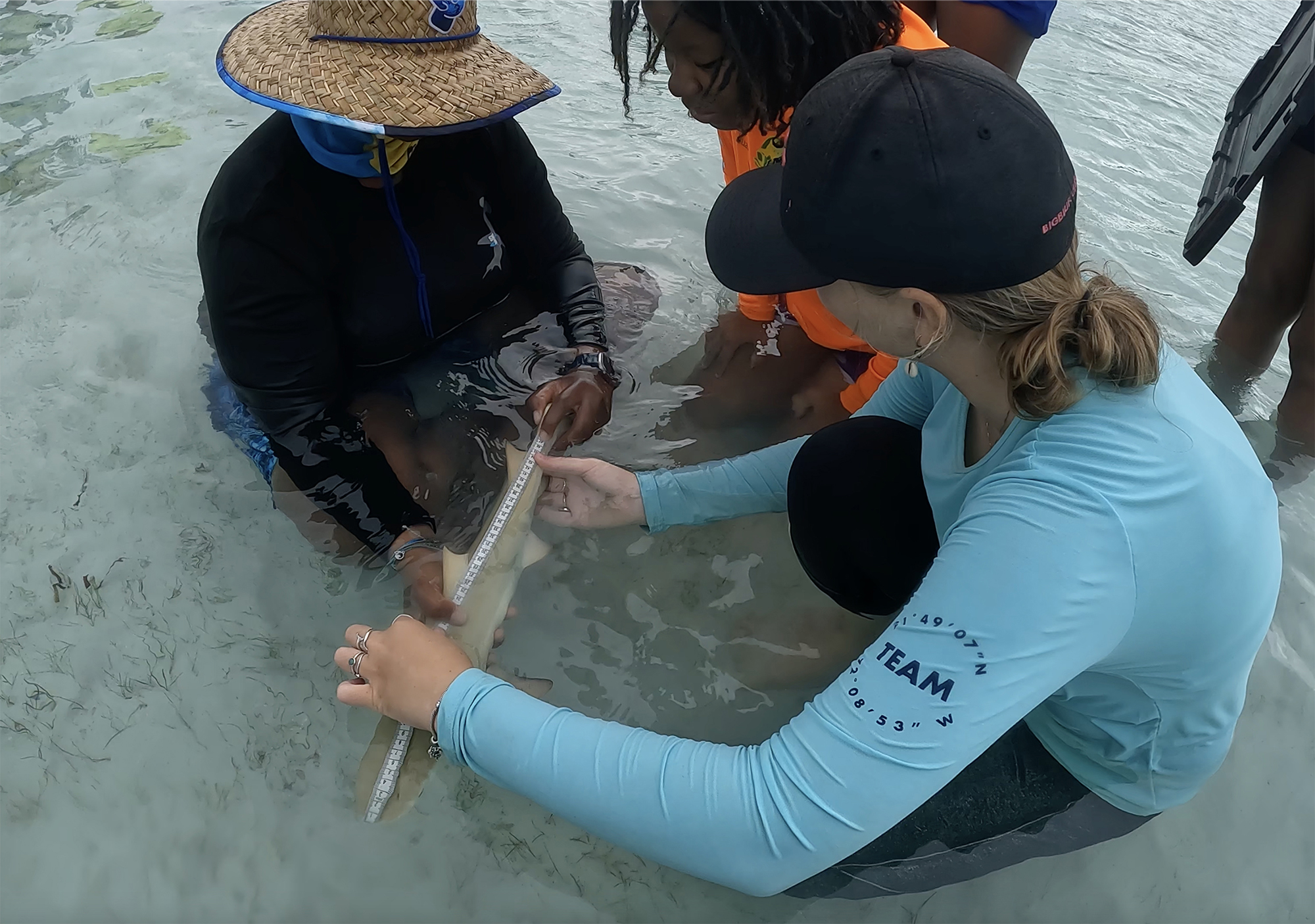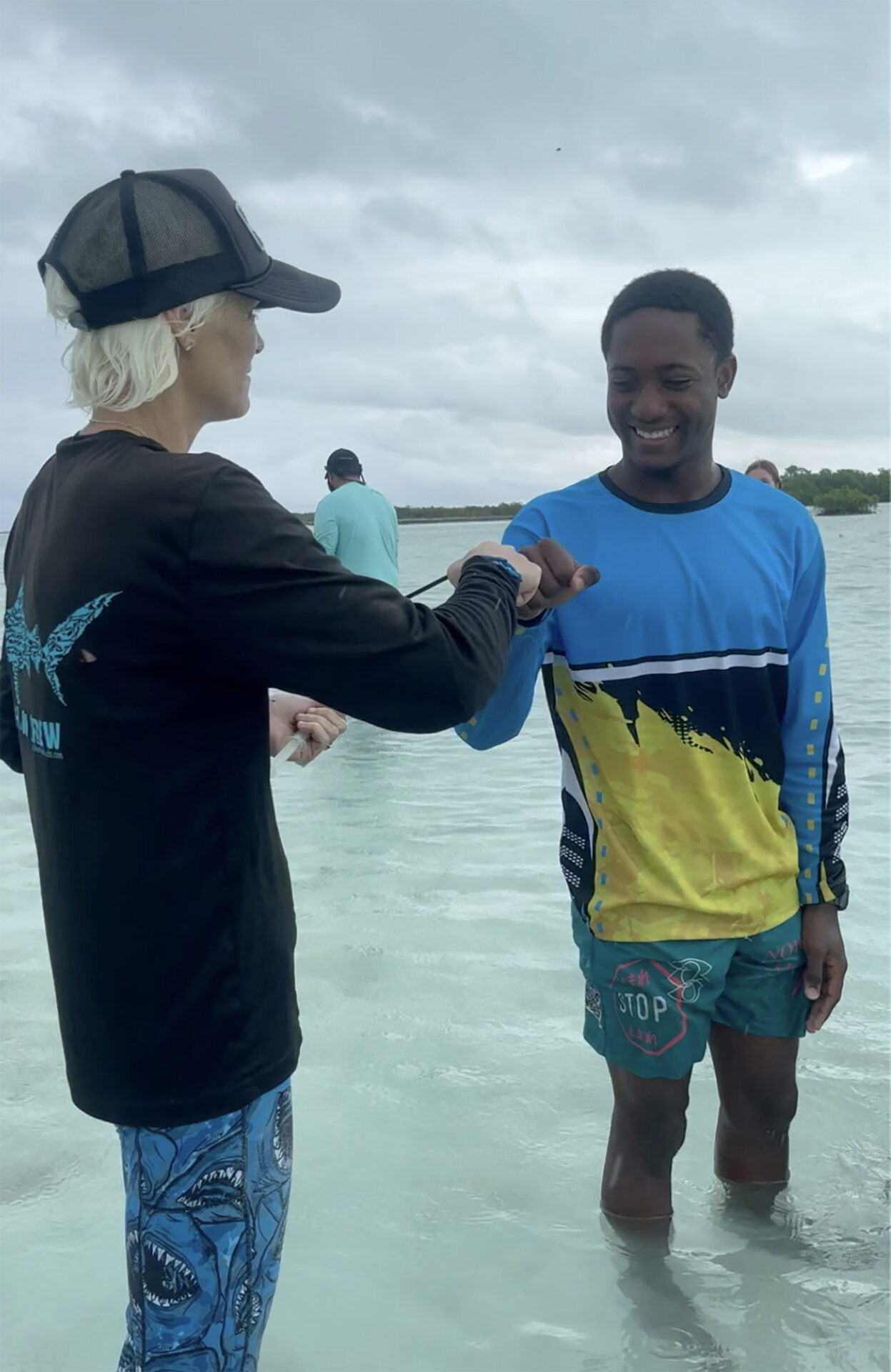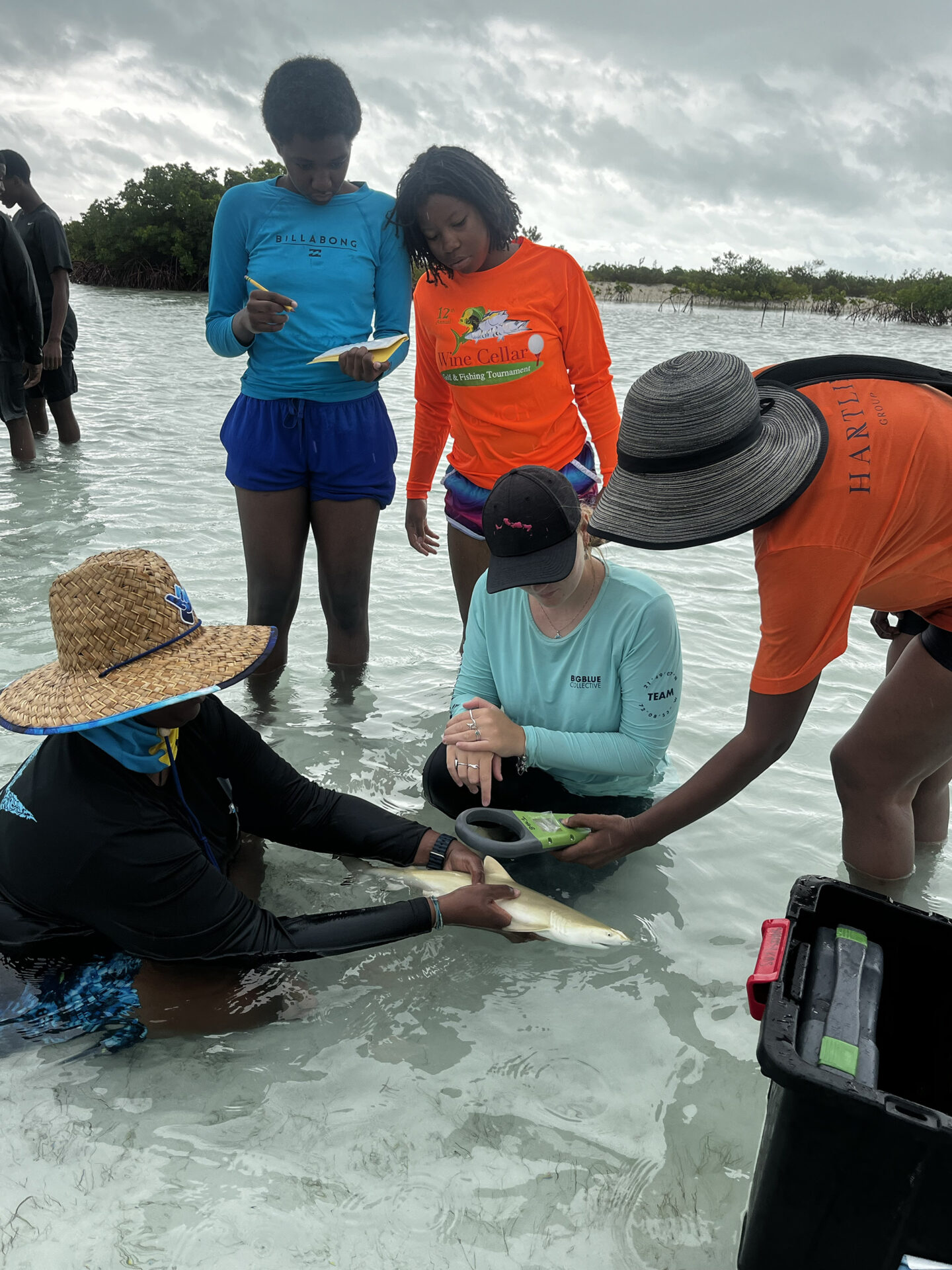Lemon Sharks Rain or Shine
One of the main goals of Project Lemon Aid is to involve the local community, and a crucial aspect of that is getting students in the field with us. They are the future of ocean conservation on the islands, and hands-on experience will empower and inspire them. They are future leaders, voters, consumers, scientists, divers, etc., and they will make an impact. We’ve taken more than 30 high school and middle school students in the field with us, and they have all been excited and eager to participate.
A massive rainstorm was predicted for our first day of fieldwork for Project Lemon Aid 2024. We watched the weather, and it looked like we would have a 2-hour window early in the day with some light rain. We had students scheduled to join us, so I didn’t want to cancel if we could at least get them out safely for a little bit. We loaded the boat and got off the dock. We opted to go to the closest study site.
As we made our way to the site, the students were not thrilled about the rain or the early start time. We decided to keep the students on the boat to start so they could at least get shelter from the rain. Our local team member Kaylam walked ahead to set a mini drum line, and before he could set the next one, there was a shark on. We grabbed the tagging box and made our way to the shark. We did the workup quickly, as another shark was already on another drum. Suddenly, the rain didn’t matter, and the students were excited to see the sharks and assist with collecting the data.

Local science teacher and students scan the shark for a PIT tag and write down data. Photo © Jillian Morris
It was an action-packed morning, and everyone was eager to participate in all aspects of the research. The students took turns taking length and girth measurements, taking the DNA sample, and inserting a PIT tag in each new shark. They used the PIT tag scanner to help determine if each shark was new or a recap. Their science teacher was also able to assist in all aspects of the research, something she can now take back and share with her other students and the school.

Students learn how to take length measurements with Sharks4Kids team member Candace Fields. Photo © Arenthia Baker
The intensity of the rain picked up, and before long, everyone was soaking wet. Phones were soaked, all the gear was soaked, and even the dry box got wet! It didn’t matter, though; everyone was still smiling and laughing.

A student is all smiles after tagging a shark for the first time. Photo © Arenthia Baker
We caught and tagged eight lemon sharks in precisely 1 hour and decided to call it as the rain kept getting heavier. Seven sharks were newborns, and one was born last year (based on total length). We also discussed why we are studying these little sharks and the importance of the mangroves. This study site is protected but is still affected by human impact.

Jillian Morris explains to a student how to scan a shark to look for a PIT tag. Photo © Arenthia Baker
Soaking wet and shivering, but all smiles.
– Hailey, Student CHHS
Thanks to the students from Clement Howell High School for joining us and for all your help.
Seeing these students so interested and engaged gives me hope. They now have a connection with these animals and this space. Not only do they understand why we are studying the sharks and why we want to protect the mangroves, they are part of it. These tiny ripples in the community become waves, and the impact spreads. Students not only find their voice, but they become change-makers, empowering and inspiring others.
